Networking background
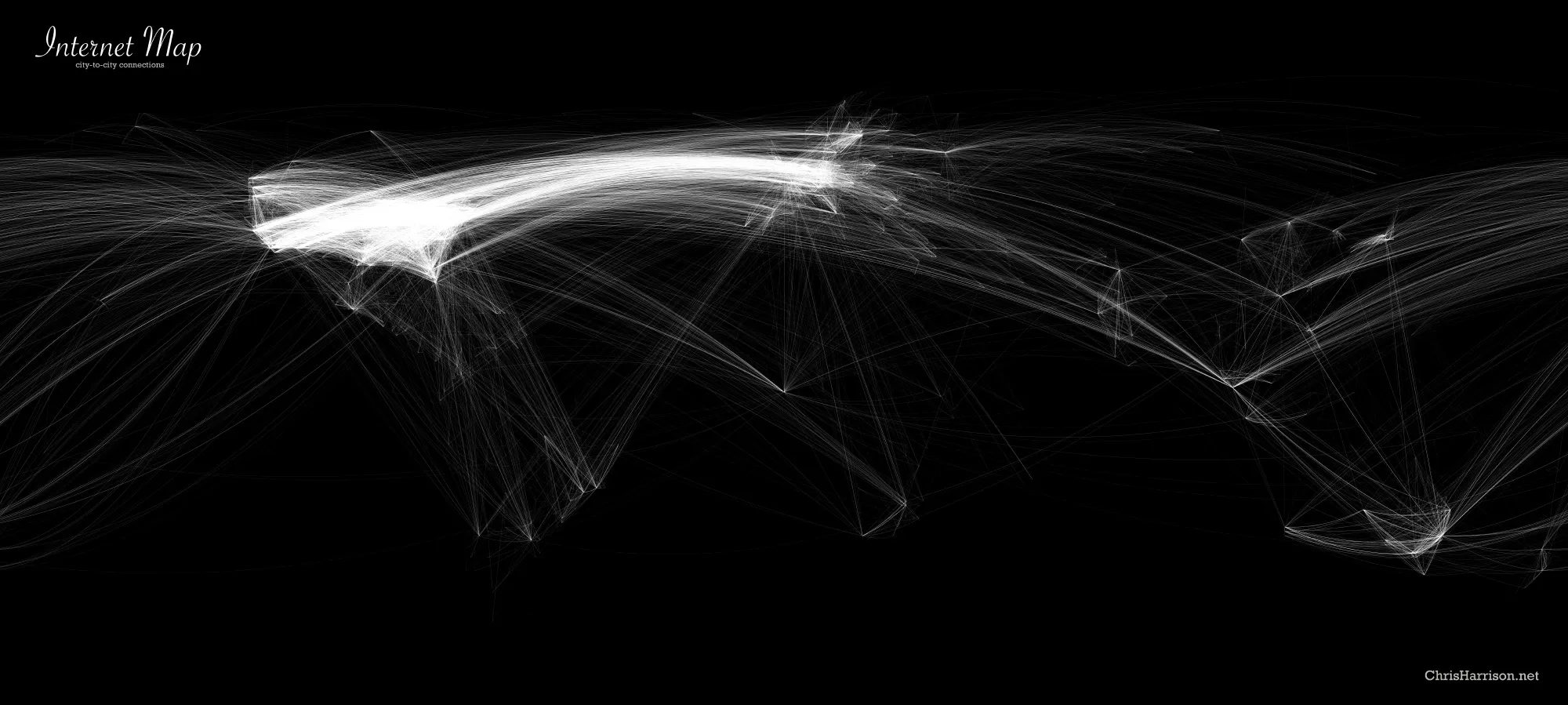
Internet components and structure
The Internet is:
- roughly hierarchical
- composed of networks
- composed of routers, links, a wide variety of edge devices
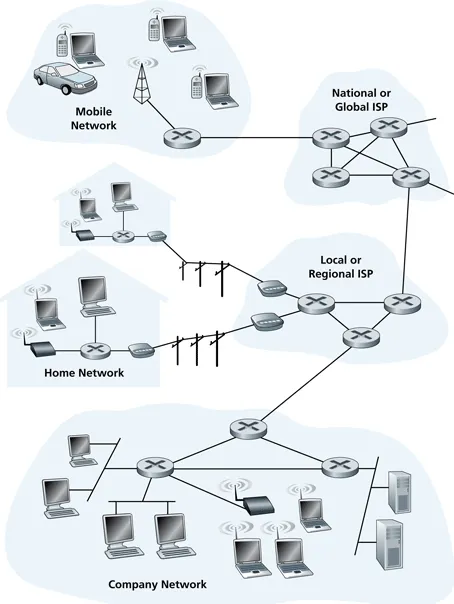
- networks connect using customer-provider relationships (usually in a contract!)
- tier-1 ISPs provide international coverage, treat each other as peers
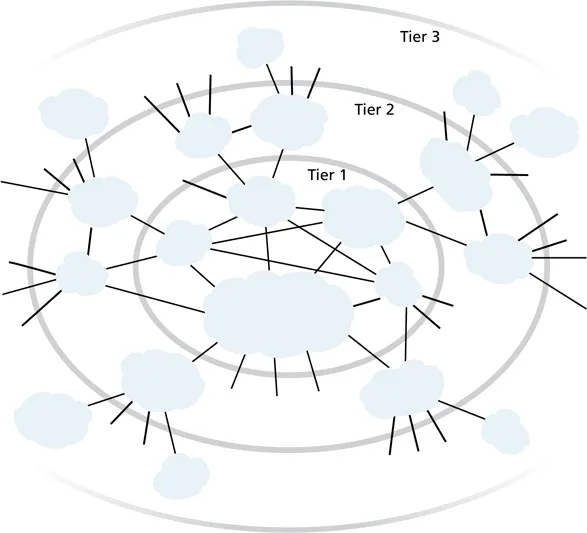
-
Lumen’s network map shows what a Tier 1 ISP looks like
-
the Internet is only roughly hierarchical:
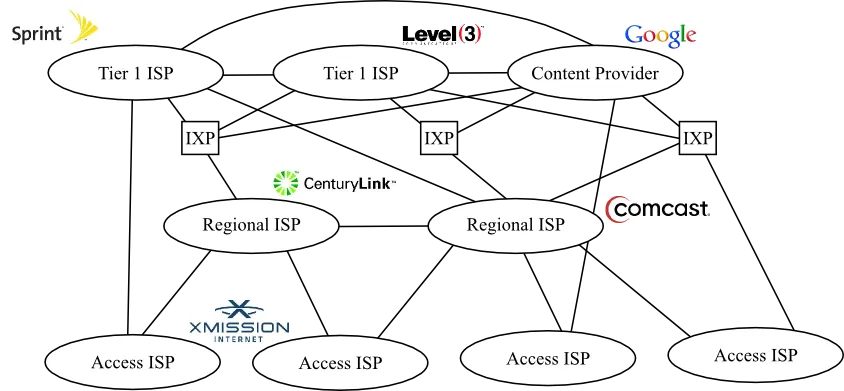
- PoP (Point of Presence): router(s) in the provider’s network where customer ISPs can connect
- multi-homing: customer ISPs may connect to more than one provider, for fault tolerance
- peering: connect directly to another ISP at the same level, instead of going through a provider, usually without any cost
- IXP: third-party location where ISPs can peer with each other
- content provider networks: large content providers (e.g. Google) have large networks, connect directly to lower-level ISPs and IXPs
Principles
-
Interoperability
- each network is independent
- they interoperate due to standards, especially: IP, BGP, TCP, DNS
- a network can do whatever it wants internally
-
packet switching
- data is divided into packets
- all packets from all sources share each link
- each packet uses full link bandwidth
- packets are stored before being forwarded
- link never idle if some packets in the queue
The triumph of packet switching
circuit switching:

packet switching:
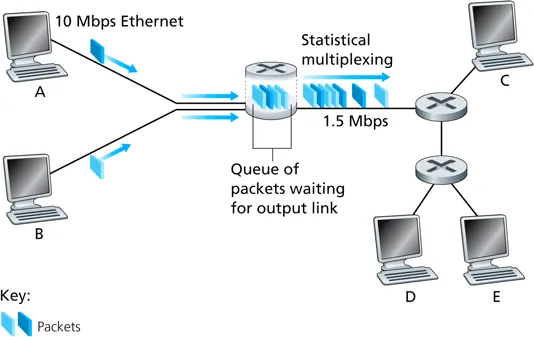
- makes Internet routers very simple, with complexity at the edges
- see End-to-end arguments in system design
- enables the Internet to support a wide variety of applications
- for a long time, circuits were considered best for voice and video but we now use Skype and watch movies over the Internet
→ never underestimate the power of lots of bandwidth and caching
Other Principles
-
rough consensus and working code
- implementations available
- design influenced by experience: performance • fluid and open standardization body (IETF)
-
open (rather than proprietary) architecture
Internet architecture
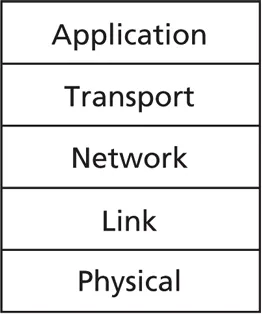
-
layering helps to build complex systems
- split large system into smaller pieces
- identify each layer’s functionality and interfaces
- can change a layer’s implementation as long as interfaces remain the same
-
encapsulation vs decapsulation
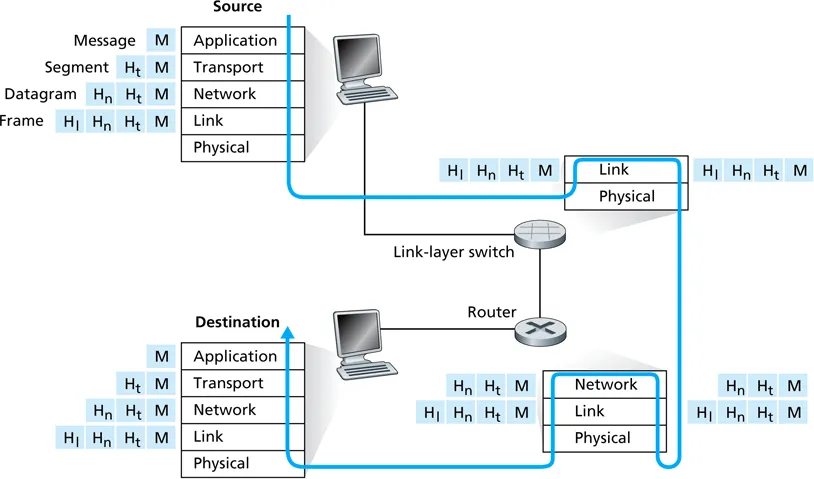
Why is the Internet so vulnerable to attacks?
The Design Philosophy of the DARPA Internet Protocols
- fundamental goal: develop an internetwork for existing networks
- second-level goals (in order of importance)
- survivability
- multiple types of service (delay vs bandwidth, reliable vs datagram)
- variety of networks
- distributed management
- cost effective
- host attachment with low effort
- accountable resources
→ security was not considered Brief History of the Internet
DNS: Domain Name System
-
people like to use names for computers (www.byu.edu), but computers need to use numbers (128.187.16.184)
- the Domain Name System (DNS) is a distributed database providing this service
- a program sends a query a local resolver
- the resolver contacts DNS servers as needed
-
many DNS services
- host name to IP address translation
- host aliasing (canonical name versus alias names)
- look up mail server for a host
- load distribution - can provide a set of IP addresses for one canonical name
-
demonstrate: dig
-
domain name: top-level domain (TLD) + one or more subdomains
- example: cs.byu.edu
- may be 127 levels deep, 63 characters per label, 255 characters per name
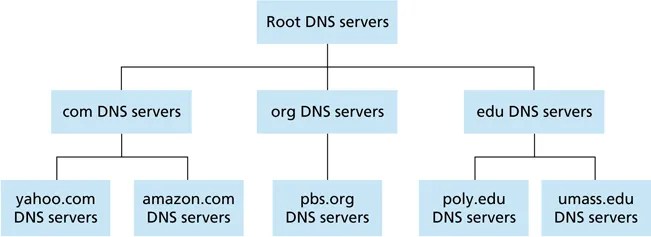
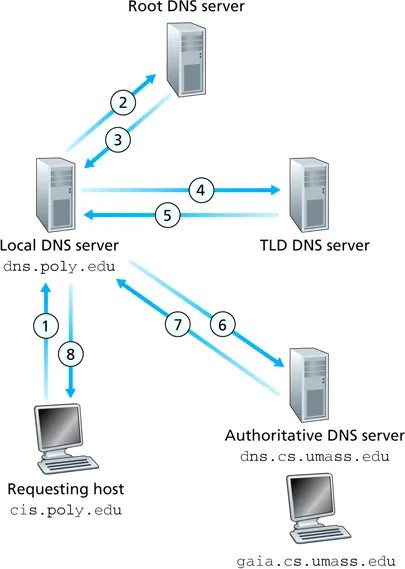
- resolver contacts root name server if it doesn’t have the mapping
- each server that doesn’t know the mapping tells the local name server the identity of the next server in the hierarchy that can answer the query
- any name server that learns a mapping caches it
- TLD servers usually cached in a local name server, so root name server (theoretically) not visited often
UDP
- best-effort service
- connectionless: no state setup
- unreliable: lost packets are not re-sent • no flow control
- no congestion control (won’t slow down, you can send as much and as fast as you want)
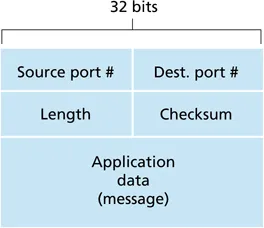
-
defined in RFC 768, from 1980
- port numbers (16 bits each)
- length of UDP segment, including header (bytes)
- checksum: detect some bit errors in transmitted segment
- application data (sometimes called ADU)
-
binary protocol
TCP
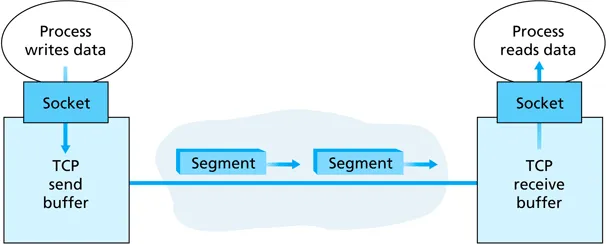
- pipelining: multiple data segments outstanding at once
- VERY important to use the high bandwidth available on the Internet
- uses congestion control to slow down when the network is overloaded, converge to a roughly fair allocation of bandwidth among compeeting flows
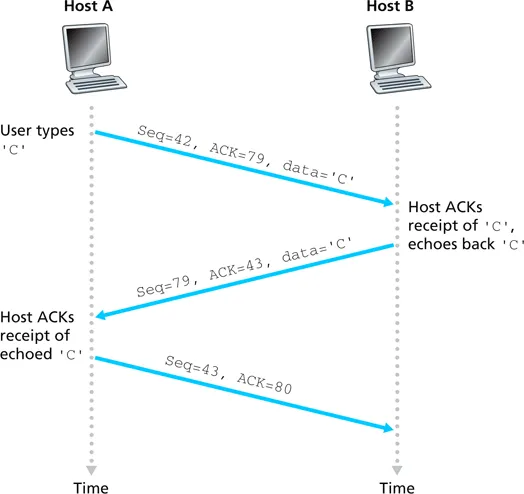
- sequence number: byte number of this segment within the byte stream
- ACK number: sequence number of next byte expected from sender
- an ACK tells the sender that the receiver has EVERYTHING up to but NOT INCLUDING the byte in the ack number
- “this is the next in-order byte I am expecting”
- the power of cumulative ACKs
- if an ACK is ever lost, a subsequent ACK synchronizes the state of the receiver with the sender
- no need to retransmit lost ACKs, which would get messy
TCP retransmission scenarios
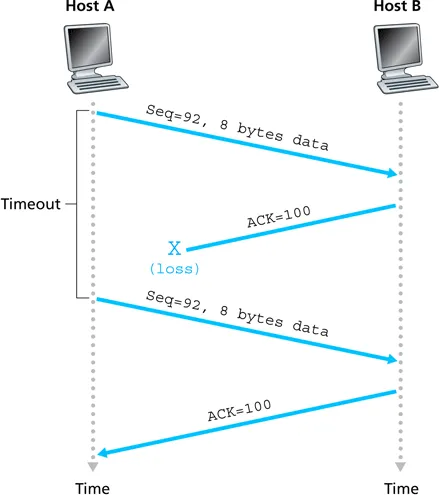
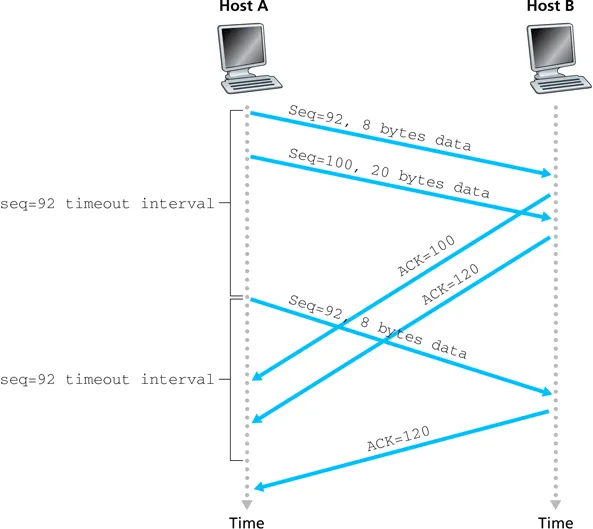
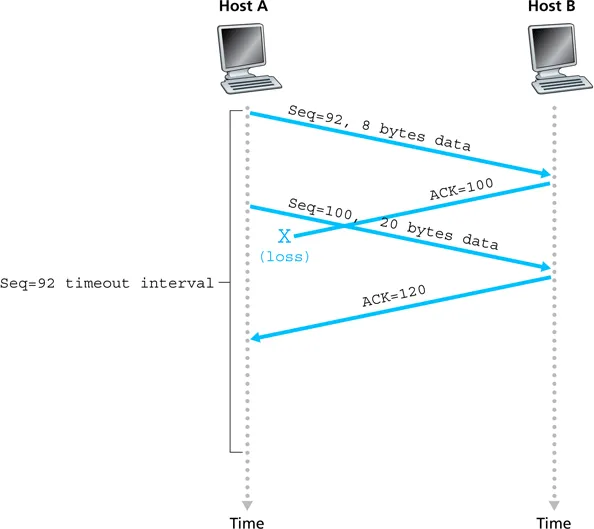
TCP handshake
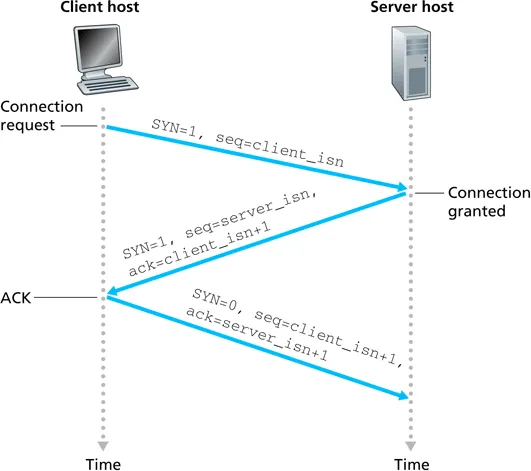
TCP header
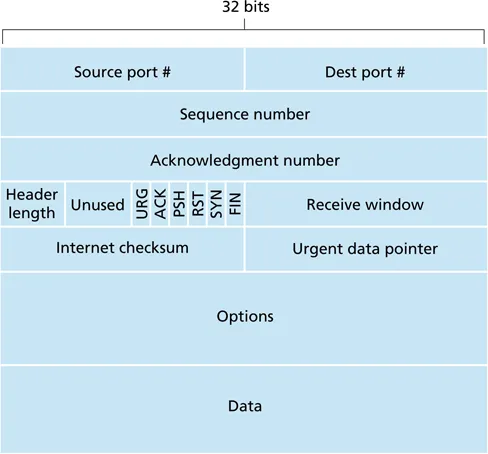
- sequence and ACK number: count in terms of bytes
- flags
A: ACK number is validR(RST): reset connectionS(SYN): establish connectionF(FIN): close connectionU(URG): urgent data, typically not usedP(PSH): push (send) data immediately, used for TELNET
- receive window: number of bytes receiver can accept (flow control)
IPv4
- common protocol for all networks
- very simple
- has lasted nearly years (since ~1978!)
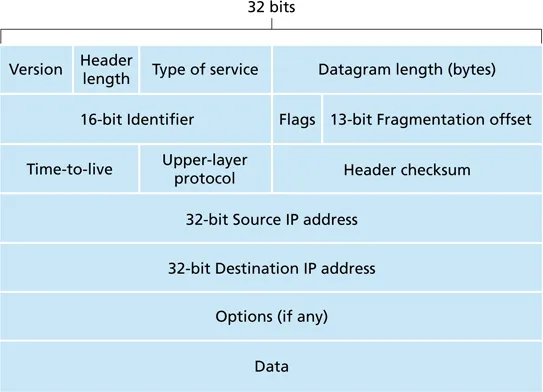
-
source IP address (easily spoofed)
-
destination IP address
-
TTL (hop count)
-
protocol: typically UDP or TCP
-
IP addresses
- 32 bits
- dotted decimal notation
byu.eduis128.187.16.184
-
forwarding process: check the destination address
- is this one of my addresses? send to next protocol specified in IP header
- is this one of my subnets? send to link layer to forward to the destination
- do I have a route? send to link layer to forward to next IP hop
- destination unknown! send an ICMP error to the source of the IP packet
IPv6
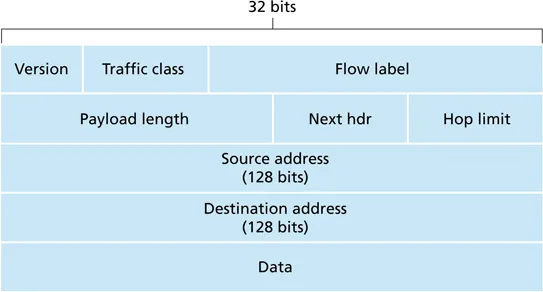
-
simplified
-
result of negotiation
-
traffic class: enable routers to map traffic into classes (delay, loss guarantees, etc)
-
flow label: uniquely identify all packets for a particular flow/application, used for QoS
-
Next Header: upper layer protocol or option
-
IPv6 addresses
- 128 bits
Link layer

-
MAC addresses
- used to get frame from one interface to another physically-connected interface (on the same network)
- most are 48 bits long, depends on link-layer protocol
- address burned into the adapter ROM
- broadcast address usually all ones (FF-FF-FF-FF-FF-FF)
-
address assignment administered by IEEE
- manufacturer buys portion of MAC address space (prefix)
- uses that prefix for all MAC addresses and ensures it does not reuse the suffix
- uniqueness provides address portability
ARP: Address Resolution Protocol
-
protocol that queries for IP addresses and maps to the associated MAC address
-
each host builds a table
- IP address
- MAC address
- TTL (e.g. 20 minutes)
-
if host A has no entry for IP address B in table
- A broadcasts ARP query for B
- all hosts on LAN receive query
- host with address B responds by unicast to A with its MAC address
- all hosts hear query and response, cache translations for A and B in their ARP tables
-
all hosts process all ARP packets, even if not addressed to themselves